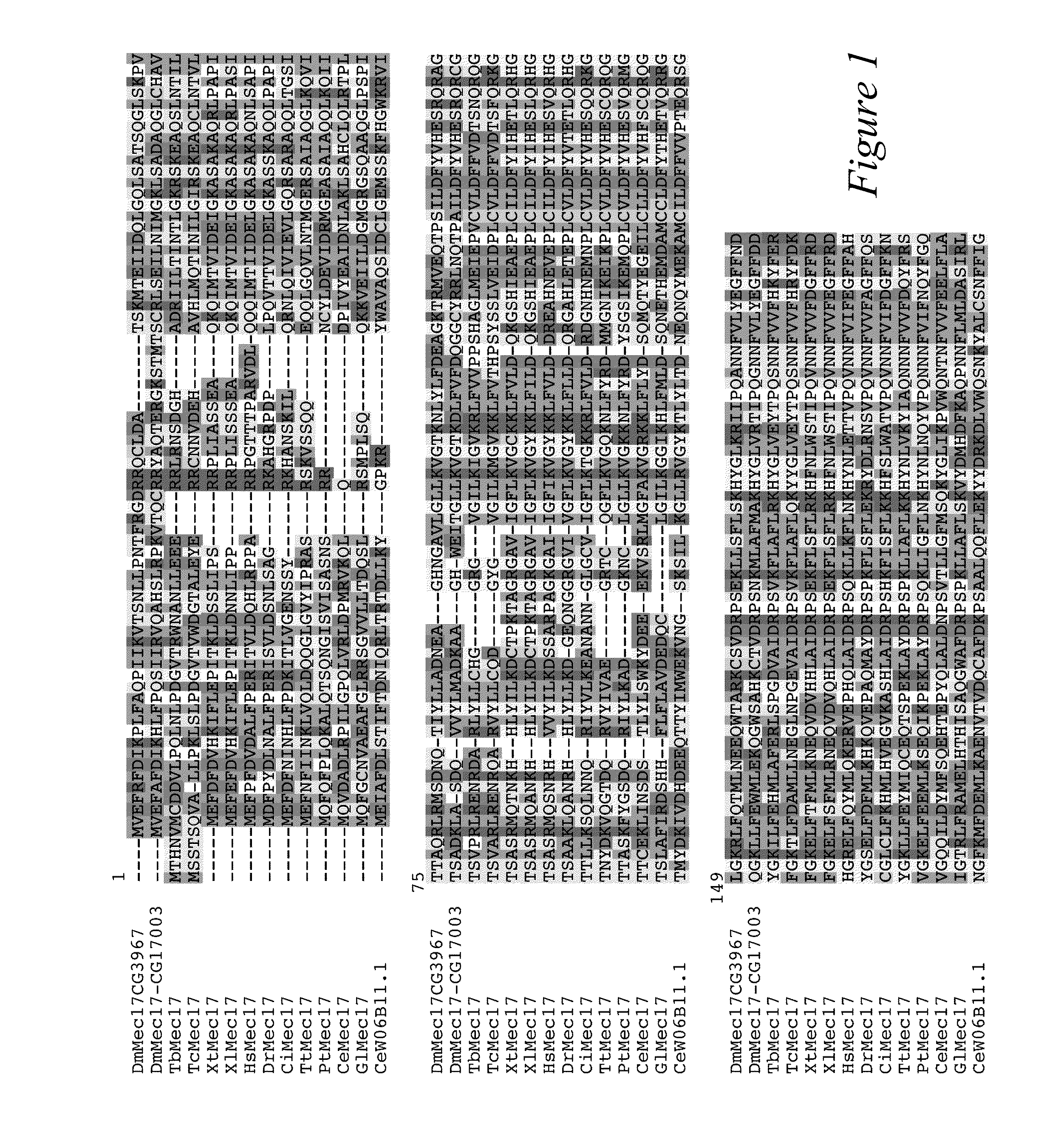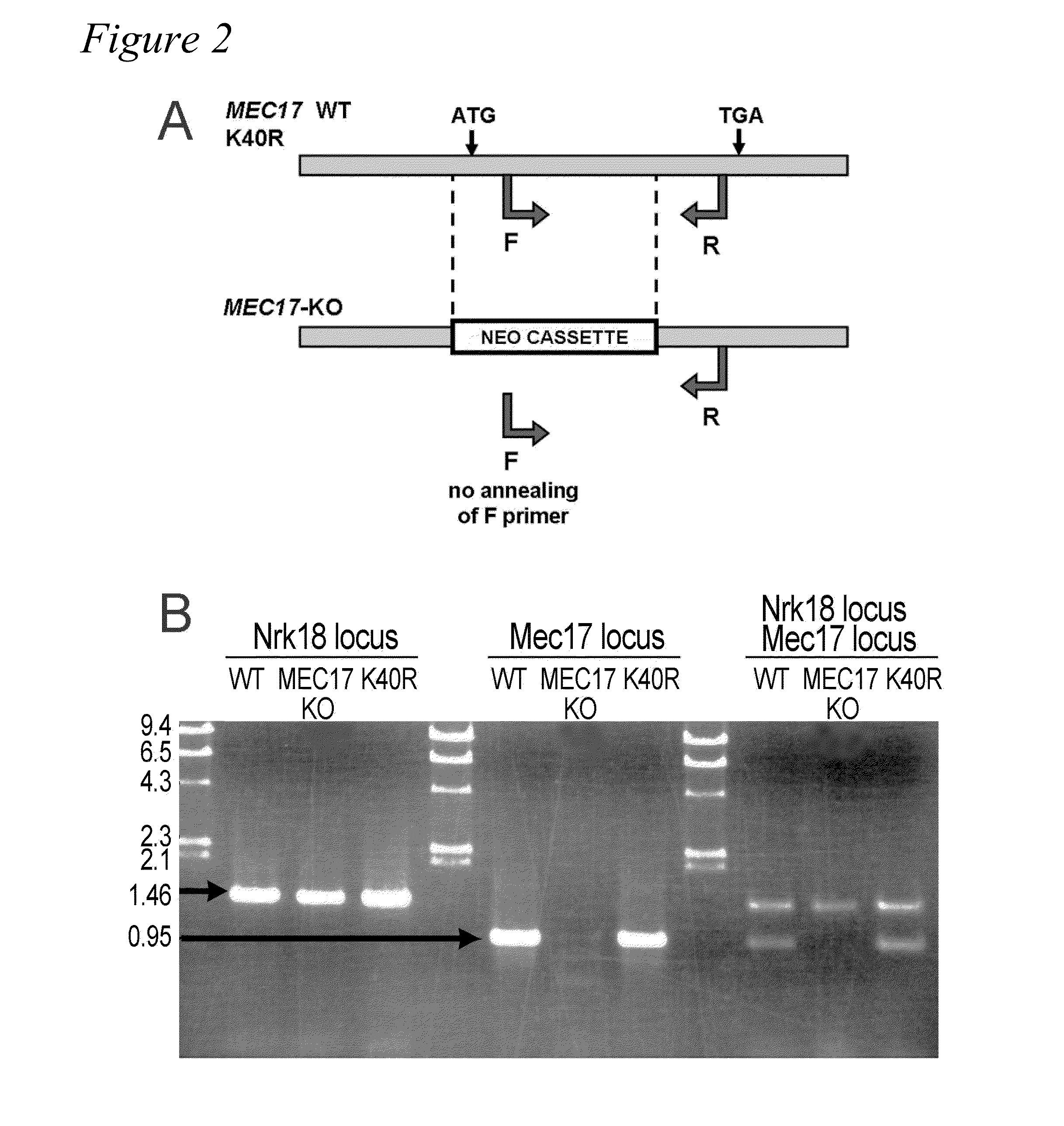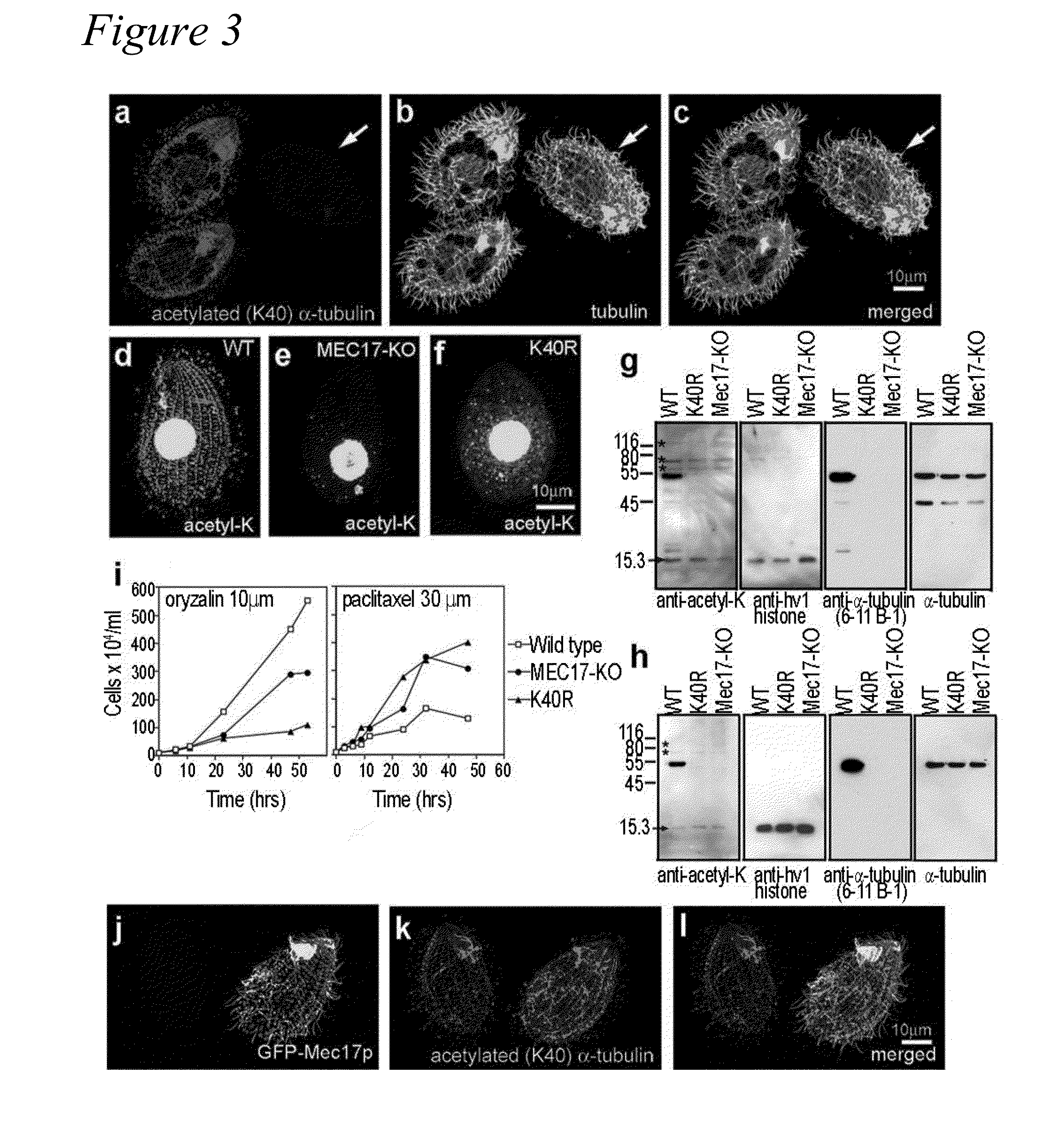Alpha-tubulin acetyltransferase
- Summary
- Abstract
- Description
- Claims
- Application Information
AI Technical Summary
Benefits of technology
Problems solved by technology
Method used
Image
Examples
examples
[0087]The present invention is illustrated by the following examples. It is to be understood that the particular examples, materials, amounts, and procedures are to be interpreted broadly in accordance with the scope and spirit of the invention as set forth herein.
example i
[0088]MEC17 protein was originally identified by Chalfie laboratory as a gene whose product is needed for maintenance of touch receptors in C. elegans (Way and Chalfie, 1989 Genes Dev 3:1823-1833; Zhang et al., 2002 Nature 418:331-335). Larve homozygous for a loss of function mutation in MEC17 gene are touch sensitive but adult forms are not (Way and Chalfie, 1989 Genes Dev 3:1823-1833). Thus, the function of MEC17 is not needed for development of the touch receptor neurons but it is needed for maintenance of their functionality. MEC17 is expressed primarily in the touch receptor neurons in C. elegans and it is one of the 50 or so genes whose expression is activated by MEC-3, a transcription factor that controls the touch receptor neuronal differentiation (Zhang et al., 2002 Nature 418:331-335).
[0089]Additional studies showed that the touch receptor neurons have unique microtubules that are made of 15 protofilaments (usually microtubules have 13 protofilaments) (Fukushige et al., 19...
example ii
MEC-17 is an α-Tubulin Acetyltransferase
[0106]In most eukaryotic cells, subsets of microtubules are adapted for specific functions by post-translational modifications (PTMs) of tubulin subunits. Acetylation of the s-amino group of K40 on α-tubulin is a conserved PTM on the luminal side of microtubules (Nogales et al., 1999 Cell 96:79-88) that was discovered in the flagella of Chlamydomonas reinhardtii (L'Hernault and Rosenbaum, 1983 J. Cell Biol. 97:258-263; LeDizet and Piperno, 1987 Proc. Natl. Acad. Sci. USA 84:5720-5724). Studies on the significance of microtubule acetylation have been limited by the undefined status of the α-tubulin acetyltransferase. Here, we show that MEC-17, a protein related to the Gcn5 histone acetyltransferases (Steczkiewicz et al., 2006 Cell Cycle 5:2927-2930) and required for the function of touch receptor neurons in C. elegans (Chalfie and Au, 1989 Science 243:1027-1033; Zhang et al., 2002 Nature 418:331-335), acts as a K40-specific acetyltransferase fo...
PUM
 Login to View More
Login to View More Abstract
Description
Claims
Application Information
 Login to View More
Login to View More - R&D
- Intellectual Property
- Life Sciences
- Materials
- Tech Scout
- Unparalleled Data Quality
- Higher Quality Content
- 60% Fewer Hallucinations
Browse by: Latest US Patents, China's latest patents, Technical Efficacy Thesaurus, Application Domain, Technology Topic, Popular Technical Reports.
© 2025 PatSnap. All rights reserved.Legal|Privacy policy|Modern Slavery Act Transparency Statement|Sitemap|About US| Contact US: help@patsnap.com



